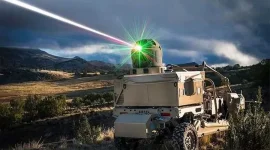- Views: 1K
- Replies: 6
The Ministry of Defence is re-evaluating the role of private companies in India's prestigious Advanced Medium Combat Aircraft (AMCA) programme.
The move is a direct response to concerns from a major private industry partner that the currently assigned work is too limited to justify the significant financial investment required.
The AMCA is India's ambitious initiative to design and manufacture a 5th-generation stealth fighter jet, placing the nation in an elite group of countries with such capabilities. The project is spearheaded by the Aeronautical Development Agency (ADA) and the state-owned Hindustan Aeronautics Limited (HAL).
However, a key private firm, which is currently slated to manufacture only the aircraft's frame, has formally expressed that this limited scope does not provide a viable return on investment.
In an effort to address these industry concerns and accelerate the project, the Defence Ministry is considering a proposal to significantly increase the work allocated to private partners.
This could involve offloading critical responsibilities beyond the airframe, such as the integration of advanced avionics, development of key sub-systems, structural assembly, and the creation of essential ground support systems.
Such a move would give private companies a much larger and more meaningful stake in the programme.
This development follows the formal project sanction granted by the Cabinet Committee on Security (CCS) in March 2024. The CCS approved an initial budget of approximately ₹15,000 crore for the design and development of five AMCA prototypes.
The timeline for the project aims for the first prototype to be rolled out by 2028, with series production expected to commence in the early 2030s.
Private sector companies argue that developing the advanced manufacturing infrastructure needed for modern aerospace projects is a capital-intensive undertaking.
Without a substantial and guaranteed share of the work, it is financially difficult for them to commit to the necessary long-term investments in technology and facilities.
Expanding their involvement would not only make the project more financially attractive for them but also align with the government's overarching goals of 'Make in India' and 'Atmanirbhar Bharat' (a self-reliant India).
A more balanced public-private partnership is expected to yield numerous benefits for the AMCA programme. By diversifying the industrial base beyond state-run entities like HAL, the ministry hopes to boost innovation, accelerate production rates, and build a more robust and competitive domestic aerospace and defence ecosystem.
The final framework for this enhanced collaboration is expected to be announced in the coming months. The decision will be made following detailed consultations between the Ministry of Defence, ADA, HAL, and representatives from key private sector stakeholders.
The outcome of these discussions will be crucial in shaping the future and pace of India's most advanced aviation project.




